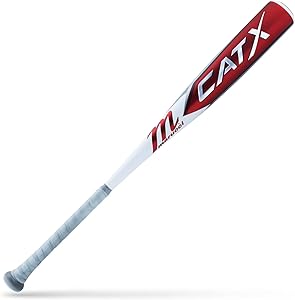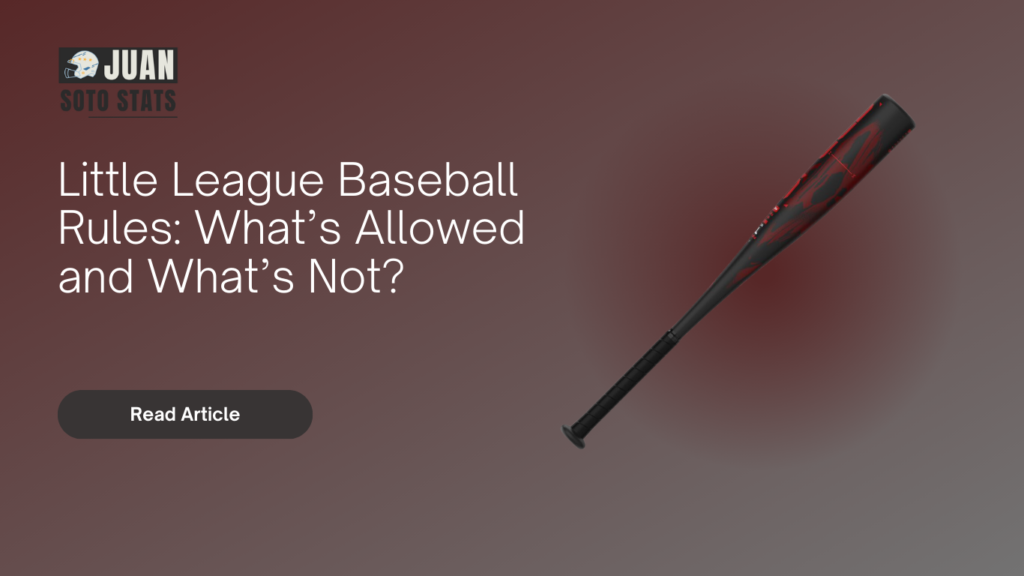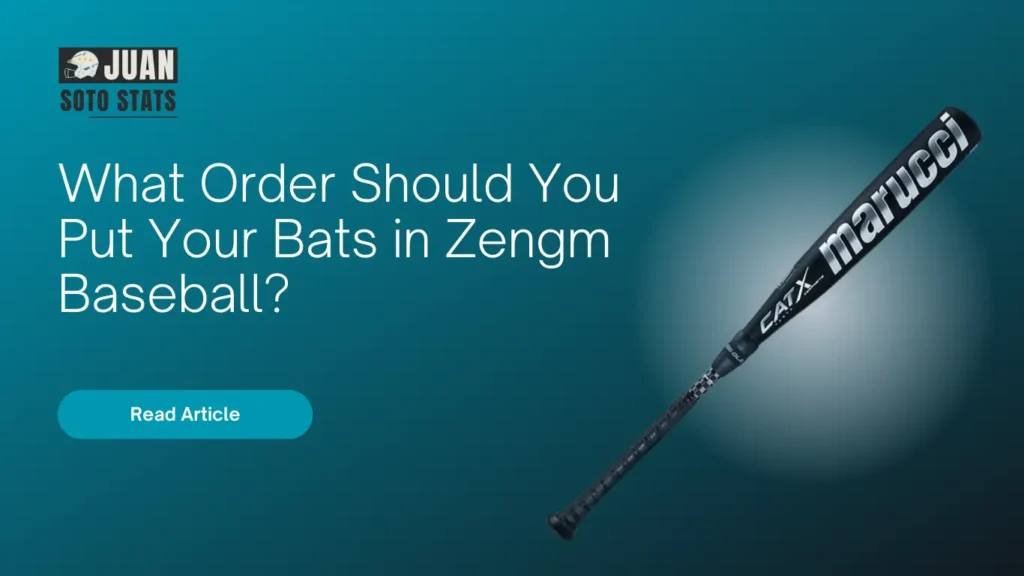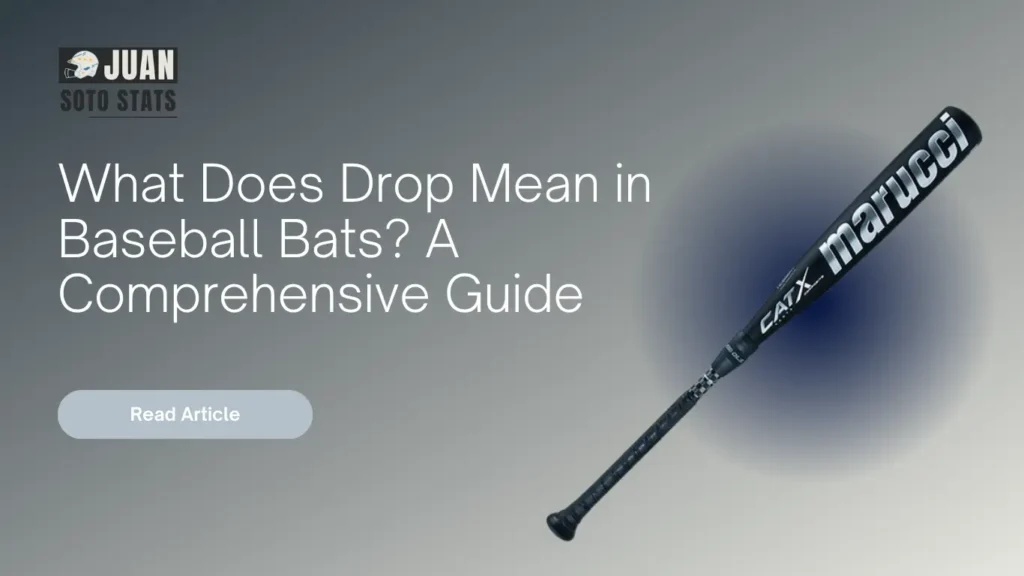In the world of youth baseball, ensuring that each player uses properly designed equipment is essential for safety, performance, and fair competition. According to the Rules for Little League Baseball Bats, we can say that Among the most critical specifications to adhere to are the approved bat dimensions for Little League play.
Understanding these dimensions not only helps players and coaches select the right bats but also complies with the Rules for Little League Baseball Bats set forth by Little League International.
This article delves into the specifics of bat dimensions, providing comprehensive details to ensure all participants are well-informed.
Essential Bat Dimensions for Little League
The rules governing bat dimensions in Little League are paramount for maintaining a safe and competitive environment. We focus on the key specifications that every bat must comply with to be considered approved within the league.
Maximum Barrel Diameter
One of the most crucial factors in bat regulations is the maximum barrel diameter. For Little League, the barrel of the bat may not exceed:
- 2¾ inches: This measurement applies universally across all divisions of Little League, ensuring consistency and safety for all players.
Utilizing bats within this barrel diameter helps enhance player control and minimizes the risk of injury.
Bat Length and Weight Specifications
In addition to the barrel diameter, the overall length and weight of the bat are equally important. The specifications are:
- Length: Bats must not exceed 33 inches in length. This limit helps ensure that players can wield the bat effectively while maintaining control over their swings.
- Weight: The weight of the bat is assessed with a drop ratio, which is the difference between the bat’s length in inches and its weight in ounces. For example, a bat that is 30 inches long can weigh no more than 17 ounces to achieve a drop of -13.
Material Guidelines
Little League bats can be constructed from various materials, each impacting the performance and feel of the bat:
- Wood: Traditional wooden bats are allowed in certain divisions. However, they must meet the stated dimensional requirements and are often subjected to stricter wear evaluations.
- Metal and Composite: The most common bats used in Little League today are made from aluminum and composite materials. These bats must carry the official certification stamp from USA Baseball to be used in League games.

Certification Standards for Little League Bats
Ensuring that bats are compliant with Little League regulations is of utmost importance. All bats must pass certain certification standards established by governing bodies.
USA Baseball Certification
Bats must feature the USA Baseball sticker or logo, indicating they comply with the performance standards set for youth baseball. This certification signifies that the bat adheres to the following criteria:
- Performance specifications: Bats must perform comparably to wood bats under standard conditions.
- Barrel diameter: As previously mentioned, bats must not exceed the allowed barrel diameter.
Importance of Regular Inspections
Before every game, teams should conduct regular inspections of bats to ensure they remain compliant. Coaches, parents, and players should check for:
- Certification marks: Ensure the bat bears the USA Baseball logo.
- Physical condition: Look for any damages, such as dents or cracks, that could affect performance and safety.
Prohibited Bat Specifications
Identifying bats that do not meet Little League specifications is equally important for ensuring safe competitive play. The following categories are strictly prohibited:
Bats with Non-Compliant Barrel Sizes
Any bat that exceeds the maximum allowable diameter of 2¾ inches is not permitted during games. This includes bats designed for higher competitive levels, such as high school or collegiate baseball.
Performance-Enhanced Bats
Bats that have been advertised as performance-enhanced or specifically designed to exceed standard performance metrics are prohibited. These bats do not provide a fair playing field and can compromise player safety.
Non-Certified Bats
Using bats that lack the required certification marks will result in immediate disqualification from the game. It’s crucial for every player to ensure they are equipped with fully compliant equipment.

MARUCCI CATX USSSA Senior League Aluminum Baseball BAT
- New BARREL
- Tightened PRODUCTION
- Our LIQUID-GEL DAMPENING SYSTEM
- AZR ALLOY offers a more RESPONSIVE
Selecting the Bat with Rules for Little League Baseball Bats
When choosing the right bat for young players in Little League, numerous factors need to be considered to ensure compliance with the approved dimensions while also meeting the player’s needs.
Player Size and Strength
Understanding a player’s physicality is fundamental to selecting the proper bat. Considerations should include:
- Height: Taller players may benefit from longer bats, while shorter players may need to opt for shorter options that they can manage more easily.
- Weight: Young players with more strength may favor heavier bats, enhancing their swing power, while those with less strength might perform better with lighter options.
Budget Considerations
When selecting a bat, it is essential to consider budget constraints. While some high-end models offer advanced technologies and materials, there are plenty of affordable options that meet Little League standards.
Finding a balance between quality and price ensures that all players have access to suitable bats without overspending.
Understanding the Impact of Bat Regulations on Player Safety
The design of regulations surrounding bat dimensions goes hand-in-hand with player safety. By adhering to specific guidelines, we can foster a safer environment for young athletes.
Injury Prevention Strategies
Limiting barrel diameter and weight restrictions significantly reduces the risk of injury caused by dangerous swinging practices or pitches. Bats that are too heavy or have excessive barrel sizes can lead to mishandling, resulting in injuries to the players themselves or opponents.
- Reduced Impact Forces: Bats designed within the approved dimensions help decrease the impact force on contact, protecting young players’ hands, wrists, and arms from injury.
Encouraging Healthy Competition
By enforcing strict Rules for Little League Baseball Bats around bat dimensions and performance, Little League promotes healthy competition among players. Every athlete has access to equipment that levels the playing field, emphasizing skill development, teamwork, and fair play.
The Future of Bat Regulations in Little League
As technology continues to evolve, so too will the regulations governing bats in Little League. Keeping pace with advancements in bat design is crucial.
Emerging Trends in Bat Design
Recently, bat manufacturers have begun introducing bats with innovative materials and technologies that enhance performance while adhering to regulatory specifications.
- Smart Bats: Some bats incorporate advanced sensors that track metrics such as swing speed and angle, giving players and coaches data-driven insights to improve effectiveness. However, any bat must still comply with existing regulations to be eligible for Little League play.
Potential for Regulation Updates
Little League International routinely reviews and updates its equipment policies. Staying informed about potential changes is essential for coaches and players to ensure continued compliance.
Following relevant publications, engaging in discussions with local leagues, and reviewing official announcements can help keep everyone updated.
Approved bat dimensions are critical for maintaining the integrity and safety of Little League baseball. By adhering to regulations concerning length, weight, and barrel diameter, we ensure that young athletes have the equipment they need to compete fairly and safely.
Compliance with certification standards further enhances the quality of play and reduces the risk of injury.
Parents, coaches, and players must remain vigilant in understanding these regulations, selecting appropriate equipment, and conducting regular inspections of bats to ensure they meet the required specifications.
By fostering a culture of awareness regarding bat dimensions, we contribute to a safe and enjoyable baseball experience for young players.
What Materials Are Approved for Little League Bats?
When it comes to youth baseball, ensuring that players utilize the correct equipment is essential to fostering a safe and competitive environment. Among these considerations, the materials used in Little League bats are critical.
Understanding which materials are approved for use can help parents, coaches, and players make informed choices about their equipment.
This article will provide a comprehensive overview of the materials that meet Little League standards, their benefits, and considerations for selecting the appropriate bat for young athletes.
Overview of Approved Bat Materials
Little League International recognizes several materials for bat construction. Each material has its own unique properties that influence performance, weight, and durability. The primary materials approved for use in Little League bats include:
- Wood
- Aluminum
- Composite
- Hybrid Bats
Let us examine each material in detail, focusing on their characteristics, advantages, and relevant guidelines.
Wood Bats
Wood bats are the traditional choice for baseball and remain popular at all levels of play, particularly in senior divisions and select leagues.
Types of Wood Used
- Hardwood: Bats made from hardwood, such as maple, ash, or birch, are commonly used in Little League. Each type of wood offers different performance characteristics:
- Maple: Known for its dense structure, maple bats tend to deliver high power and are often preferred by power hitters.
- Ash: This type of wood is lighter compared to maple, providing a more flexible bat that enhances swing speed. It is favored for its balanced performance characteristics.
- Birch: Birch bats combine characteristics of both maple and ash, offering good durability and a larger sweet spot.
Benefits of Wood Bats
- Performance Feedback: Wood bats provide immediate feedback on contact quality, helping players develop better swing mechanics.
- Durability: Properly maintained wood bats can last a long time and are often resistant to deformation under regular use.
- Authenticity: Using wood bats preserves the traditional aspects of the game, maintaining a connection to baseball’s rich history.
Aluminum Bats
Aluminum bats, often referred to as metal bats, are widely used in youth leagues due to their performance and durability.
Construction Features
- Single-Wall vs. Double-Wall: Aluminum bats may feature a single-wall or double-wall construction.
- Single-Wall: Generally lighter and less expensive, single-wall bats provide adequate performance for younger players.
- Double-Wall: These bats are designed for increased trampoline effect, producing higher batted ball speeds, making them ideal for competitive play.
Advantages of Aluminum Bats
- Consistency: Aluminum bats maintain their performance level over time and do not require the breaking-in process typical of wooden bats.
- Lighter Weight: The lightweight nature of aluminum allows younger players to swing faster, which can improve their batting capability.
- Durability: Aluminum bats tend to withstand harsh conditions better than wood bats, reducing the likelihood of breakage.
Composite Bats
Composite bats are an innovative option, combining materials to create lighter yet powerful bats that enhance performance.
Construction and Performance
- Material Composition: Composite bats are crafted from layers of different materials, such as carbon fiber and fiberglass. This construction allows for optimal performance and flexibility.
- Break-In Period: Most composite bats require a break-in period. Players need to hit a specific number of balls with the bat to achieve maximum performance.
Key Benefits of Composite Bats
- Increased Sweet Spot: Composite bats often have a larger sweet spot, making it easier for players to make effective contact with the ball.
- Vibration Dampening: These bats typically offer superior vibration dampening, making them more comfortable for players during contact.
- Performance Consistency: Once broken in, composite bats provide consistently high performance across various hitting conditions.
Hybrid Bats
Hybrid bats offer a blend of material characteristics by combining elements of both aluminum and composite construction.
Construction Details
- Dual Materials: These bats typically feature an aluminum barrel for durability and a composite handle for added comfort and flexibility.
- Versatility: Hybrid bats can provide the best of both worlds, with efficient weight distribution and enhanced power.
Advantages of Hybrid Bats
- Performance: They offer improved ball exit speed and distance due to the combination of materials.
- Comfort: With the cushioned grip from the composite handle, players enjoy comfort while maintaining control during swings.
- Durability: Hybrid designs often enhance the lifespan of the bat by using materials that can withstand repeated use.
What Do Rawlings Heart of the Hide Codes Mean? Rawlings Baseball Codes
Certification and Compliance Standards
Regardless of the material used, all bats must comply with specific certification standards to be approved for use in Little League.
USA Baseball Certification
ats must include the USA Baseball certification logo, which signifies that they meet the performance standards set for youth baseball equipment. This certification is crucial for ensuring that all bats used in Little League are safe and reliable.
Importance of Certification
- Quality Assurance: The USA Baseball certification indicates that the bat has undergone rigorous testing to verify its performance characteristics and compliance with regulations.
- Safety: Using certified equipment minimizes the risk of injury by ensuring that bats do not provide unfair advantages or behave unpredictably during play.
Regular Inspections
Before each game, teams should conduct inspections of their bats to confirm their compliance with the relevant standards. This involves checking for:
- Certification Marks: Every bat should display the USA Baseball certification logo.
- Physical Condition: Look for signs of damage, such as dents, cracks, or excessive wear, which could compromise the bat’s integrity.
Selecting the Right Bat Material for Young Players
Choosing the appropriate bat material is crucial for enhancing young players’ performance and fostering their love for the game. Here are some considerations to keep in mind:
Assessing Player Skill Level
As players progress in skill and strength, their equipment should evolve to match their developing abilities:
- Beginners: New players may benefit from lightweight aluminum bats, which provide ease of use and control. A smaller diameter and lighter weight help inexperienced players develop their swinging technique.
- Intermediate Players: As children grow stronger and their skills improve, transitioning to a composite or hybrid bat can provide enhanced power and performance without compromising control.



